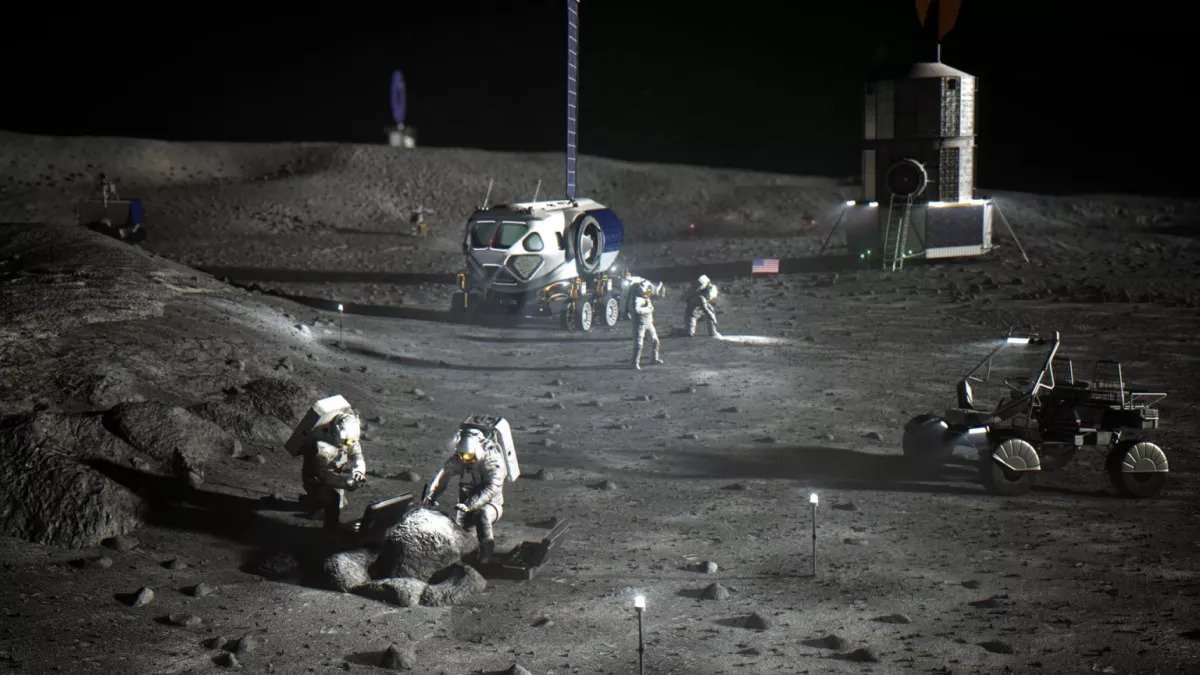When the astronauts of the Artemis mission get to the Moon, they will first of all look for water ice in the shadow of the polar craters. However, it is quite possible that they should try to find microscopic life there. This is exactly what a recently published study says.

Artemis Project Missions can search for life on the Moon
There is no life on the Moon. In recent decades, everyone has recognized this, especially after American astronauts visited it in 1969-1972. However, according to Prabal Saxena, a researcher at the NASA Space Flight Center, it is still worth looking for there.
If NASA’s current plans for the Artemis project remain unchanged, then in 2025 its third expedition will land on the surface of the Moon near its south pole. Where exactly remains uncertain. So far, 13 potential districts have been selected, each measuring 15 by 15 km.
Somewhere out there, at the bottom of cold, permanently shadowed craters, astronauts will be looking for water ice, which is necessary to build a base on the Moon. Almost no one doubts that it, as well as frozen carbon dioxide, will be found there. However, Prabal argues that some terrestrial microorganisms could well survive in such conditions.
How terrestrial microorganisms could get to the Moon
The scientist’s statement that life could survive on the Moon is based on the fact that many terrestrial microscopic organisms could withstand vacuum, radiation, and the terrible cold. This is usually understood in such a way that evolution could create their analogues on other planets.
However, with the Moon, everything is much simpler. Life on it could have been repeatedly brought directly from Earth. Impacts of large meteorites and volcanic eruptions may well send a piece of Earth’s rock on a space trip. And along with it, micro-organisms can become astronauts.
The journey to the Moon is not very long, so they may well find themselves in one of the darkened craters.
Astronauts can bring earthly life to the Moon
However, not all researchers agree that life is so easy to find on the Moon. According to Heather Graham, a geochemist from NASA, the transfer of organic substances with terrestrial meteorites is a common thing. But science has no solid evidence about the possibility of the journey of living beings. The theoretical possibility does not mean that this necessarily happened in the past.
But people themselves will almost certainly bring microorganisms to the Moon. Of course, everything that is being prepared for launch is reliably sterilized. However, a person carries a whole microscopic ecosystem on himself and in himself. So, one way or another, after the astronauts land, life on the moon of our planet will appear.
It is expected that the initial environment for the reproduction of microorganisms will be the lunar base. However, they will certainly get out, most of them will die, but in the end some of them will find comfortable enough conditions and flourish.
It is quite possible that spacecraft will contribute to this. Frozen carbon dioxide is an excellent source of nutrients. And frequent launches and landings will increase its number on the surface of the Moon. Therefore, the conditions for the life of microorganisms will become even more comfortable.
According to www.space.com.
Follow us on Twitter to get the most interesting space news in time
https://twitter.com/ust_magazine

